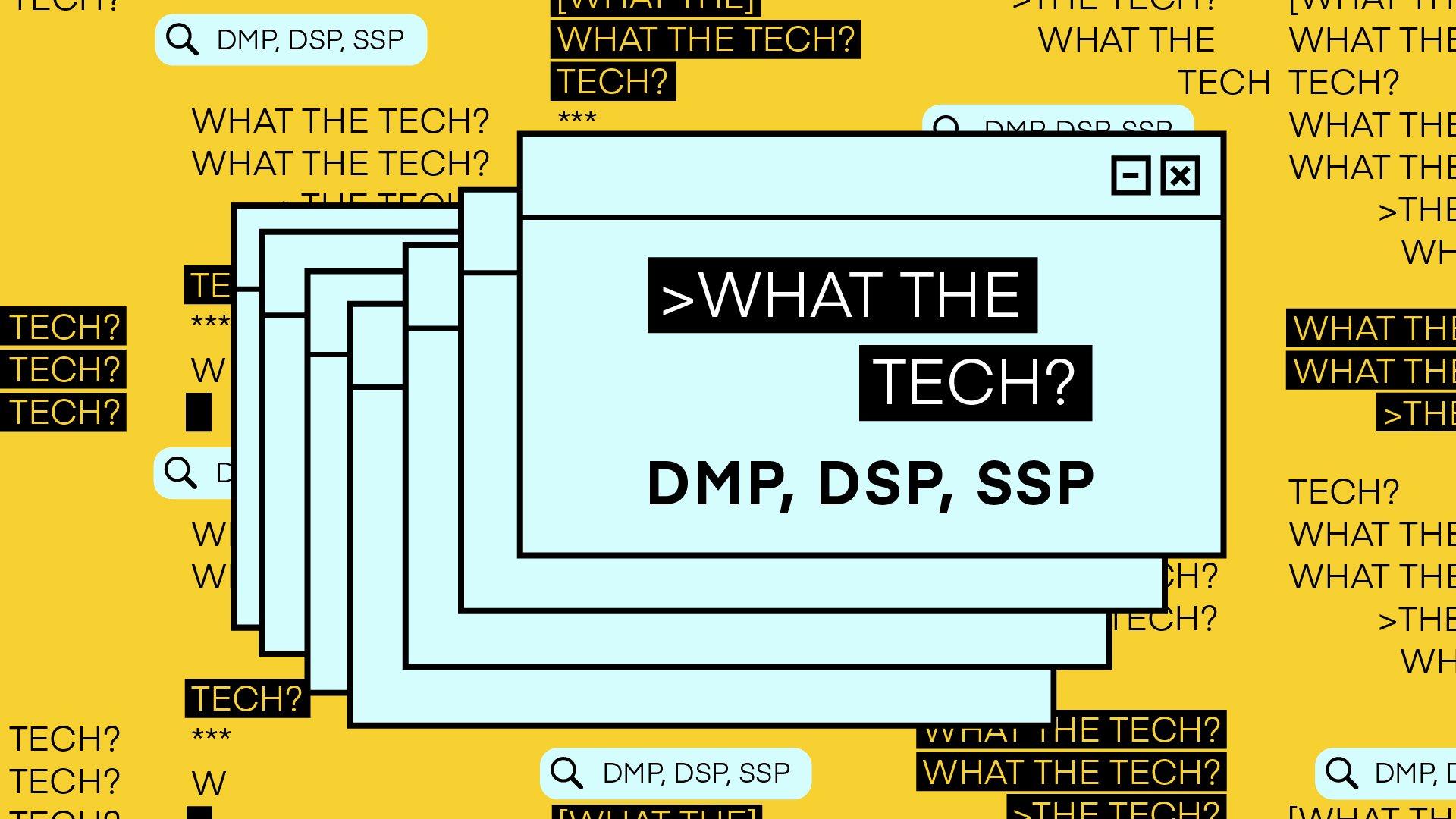What the Tech are DSPs, SSPs, and DMPs?

Digesting ad tech’s alphabet soup.
The digital advertising industry is stuffed full with esoteric verbiage, and there’s no better example than demand-side platform, supply-side platform and data management platform.
DSP, SSP and DMP for short, each term represents a vital part of the ad tech ecosystem. They also all sound vaguely similar. To make matters confusing, they work in conjunction with one another and their functions often overlap.
Trying to make sense of this alphabet soup is never easy. Which is why we’ve compiled this handy dandy explainer about what each of these terms mean, how their respective technologies work and how they provide value for advertisers.
Let’s start with DSP.
Actually, before we do that, it might be helpful to explain what an ad exchange is.
Much like a stock exchange is a place for buyers and sellers to come together and execute stock transactions, an ad exchange is an online marketplace for buying and selling digital advertising spots. Sellers (in this case, publishers) make their advertising inventory available on an exchange, and buyers (brands and advertising agencies) can bid on and purchase it.
Exchanges allow brands and agencies to bid on ad inventory in real-time. When an exchange is working well, it allows advertisers to buy ad placements efficiently and for publishers to receive the most competitive price for their ads, optimizing revenue.
Easy enough. But what's that got to do with a DSP?
Remember that’s an abbreviation for demand-side platform. In this instance, demand refers to the organizations buying ads (brands and agencies), thus providing demand for the advertising inventory.
A DSP, then, is a platform where brands and agencies can buy ads across several different advertising exchanges. That is, it aggregates advertising inventory from several exchanges all in one place, allowing for even greater efficiency.
Aha. So an SSP must be the opposite, right?
Right, indeed.
An SSP is the inverse of a DSP. Whereas a DSP lets advertisers buy across several different ad exchanges at the same time, an SSP lets publishers sell their ad inventory across different ad exchanges. The thinking is that by making their ad inventory widely available via an SSP, publishers can ensure they’re receiving the best possible offer and maximizing revenue.
A simple way to think about this is that DSPs are for marketers, and SSPs are for publishers. They’re part of the same ad marketplace and they use similar technologies, but they work on opposite sides of a transaction.
What makes this process more efficient?
Historically, buying ads meant a lengthy negotiation between a media buyer at an agency and a salesperson at a publisher. Hashing out the particulars of a campaign could take weeks of phone calls, faxes, client approvals, and boozy, schmoozy business dinners.
With DSPs and SSPs, the entire process is automated through a web portal. This is what people refer to when they talk about programmatic advertising, which was once an industry buzzword, but is increasingly the standard way of doing business.
What about the third one?
Who could forget DMPs!
A DMP is slightly different in that, as the name implies, it deals primarily with data. Advertisers use all kinds of data to ensure their digital ad campaigns are relevant to the consumer. A DMP allows brands and agencies to store all of this data in one convenient place so they can call upon it and use it whenever they run an ad campaign.
Say an auto company wants to target only those consumers in the market for a car with a campaign for their newest model. They would use their DMP to build the target audience. Then, they would port that data to their DSP, so they could begin buying ads aimed at that demographic.
Meanwhile, a group of automotive blogs make their ad inventory available via an SSP. The DSP and SSP meet in the middle and, using data from the DMP, determine there’s a match. Once a price is settled, the ad gets served, and voila — you have car ads on the auto blog, where they can reach their intended audience. And we don’t all have to look at car ads when we’re not interested in buying one.
From the DMP to the DSP to the SSP. They’re all core pieces of one, interlocking ad-buying ecosystem.